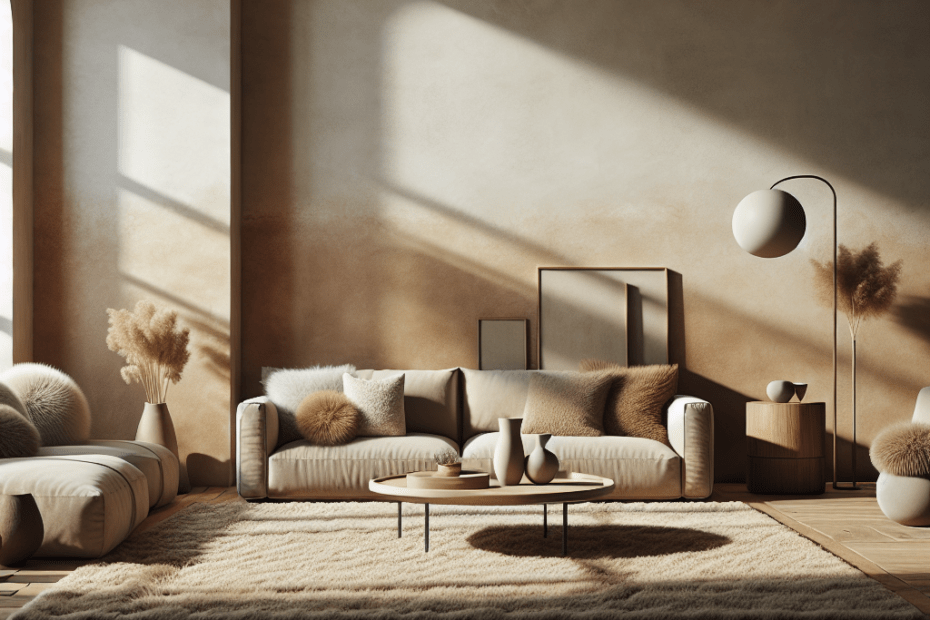“`html
A Guide to Creating a Warm Minimalist Living Room
As more people embrace the comforting yet clean aesthetic of minimalist design, a new trend is emerging — the warm minimalist living room. This style focuses on the use of muted colors, natural textures, and minimal clutter, all while preserving a cozy and inviting atmosphere. By integrating modern design with natural warmth, they create spaces that are both stylish and comfortable.
Understanding Warm Minimalism
Warm minimalism is an approach that combines the decluttered and simple appeal of minimalist design with the comforting and inviting feel that comes from using warm tones and textures. According to a study by Houzz, 56% of homeowners seek to improve relaxation in their home through design elements, making warm minimalism an appealing choice for many. It allows for personal expression without overwhelming the senses, making spaces feel lighter, airier, and more cohesive.
Key Elements of a Warm Minimalist Living Room
| Element | Description |
|---|---|
| Color Palette | Use beige, taupe, cream, and soft whites. |
| Furniture | Opt for simple, clean lines with natural materials. |
| Textures | Incorporate wool, linen, and wood to add warmth. |
| Lighting | Choose soft, ambient lighting with warm bulbs. |
| Accessories | Select a few personal items for personality, but limit to essentials. |
Choosing the Right Color Palette
Color plays a significant role in cultivating a warm minimalist living room. Muted and neutral tones like beige, taupe, cream, and soft whites form the base of this style. These hues provide a calming backdrop that can make a room feel more expansive, serene, and inviting. According to Sherwin-Williams, these colors are popular choices for creating balanced and tranquil environments.
Selecting Minimalist Furniture
Furniture in a warm minimalist living room should have clean lines and be crafted from natural materials. Pieces with simple designs enhance the sense of space and reduce visual clutter. They recommend choosing furniture made from wood, metal, or stone, as these materials add character and warmth. Quality over quantity is key, with each piece serving a specific function and purpose.
Incorporating Texture for Warmth
While minimalism often eschews ornamentation, texture can play a crucial role in adding warmth and depth to a minimalist design. Soft textures, such as wool rugs, linen drapes, or knitted throw blankets, bring tactile comfort and provide visual interest without overwhelming the space. Wood is a favored material in warm minimalist designs due to its variety of grains and colors, which contribute to a sense of cozy sophistication.
Optimizing Lighting
Lighting is essential in setting the desired mood in a warm minimalist living room. They use a mix of natural and artificial lighting to maintain coziness throughout the day. During daylight hours, large windows can flood the space with natural light, enhancing the airy feel of the room. For artificial lighting, they can select fixtures that emit a soft glow, such as warm LED bulbs or filament bulbs, paired with strategically placed floor or table lamps.
Personalizing with Accessories
Though minimalism is known for its restrained use of décor, adding personal touches through carefully chosen accessories can achieve a warm minimalist living room. Placing a few cherished items, such as books, art, or plants, adds character and personality. However, they must maintain balance by limiting the number of these pieces, ensuring that each has a meaningful or functional purpose.
Key Takeaways
- A warm minimalist living room combines simplicity with comfort using a muted color palette.
- The use of natural materials and textures infuses warmth and depth into the space.
- Lighting is crucial for maintaining a cozy atmosphere; soft and ambient options work best.
- They can personalize the space with select accessories that add character without clutter.
FAQ Section
- What defines a warm minimalist living room?
It is a style that merges minimalist design principles with inviting colors and textures to create a comfortable environment.
- How can they achieve a warm atmosphere in a minimalist setting?
Incorporate natural materials, use soft lighting, and opt for neutral color palettes to introduce warmth.
- Why is lighting important in warm minimalist design?
Proper lighting enhances coziness, making the space feel inviting and maintaining the warm ambiance.
- What types of materials work best for warm minimalist furniture?
Natural materials such as wood, leather, and stone are preferred for their texture and warmth.
- Can they include personal items in a minimalist space?
Yes, but it’s essential to select a few meaningful items that do not disrupt the overall minimal aesthetic.
“`
In this blog post, readers can learn how to enhance their living room by creating a warm minimalist space that balances style with comfort and personality. By carefully selecting colors, materials, and lighting, they aim to achieve a welcoming and serene environment.
